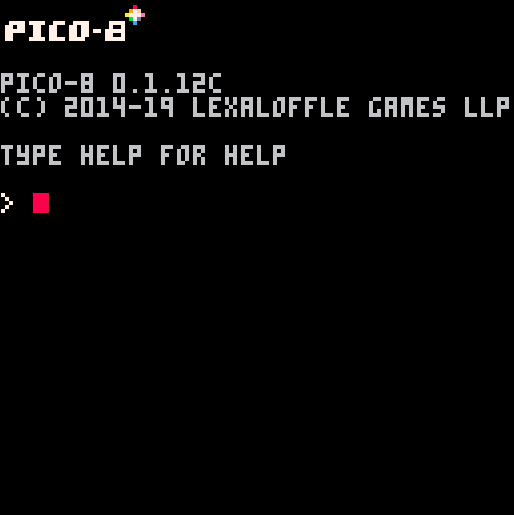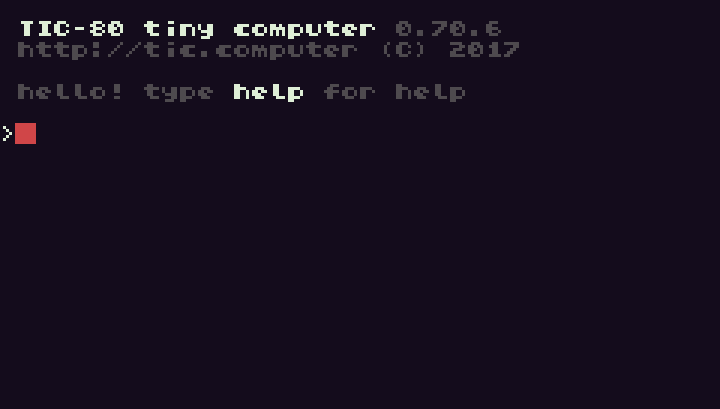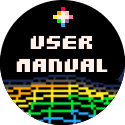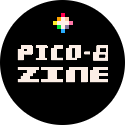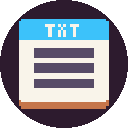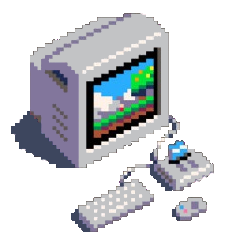
Fantasy Consoles
What is a Fantasy Console?
Joseph White ("zep") of Lexaloffle, the creators of Voxatron and PICO-8, coined the term "fantasy console" and describes it as:
"A fantasy console is like a regular console, but without the inconvenience of actual hardware. ... It is similar to a retro game emulator, but for a machine that never existed."
This sparked an entire genre of game development software with strict limitations and lo-fi sound, music, and graphics.
Perhaps unintentionally, they are also amazingly approachable to people of all ages wanting to learn to code and make games.
Here, we want to highlight the best Fantasy Consoles for learning code and game development and help you choose which one is right for you!
Honorable Mentions
Here are a few extra fantasy console options that we have not reviewed, but know they have active communities and developers. Some of them target specific languages that you may prefer:
Python
PyxelScript (like Python)
BASIC
There are many more fantasy consoles out there but many seem to be abandoned projects and no longer under development. If you want to see all of them then check this out:
There is also a 3D fantasy console still being developed. It is the big brother of PICO-8 and shares many components and features. You can buy them both in a bundle. Find out more here:
(Updated: April 2020 )
Compare Fantasy Consoles
| Nerdy Rating |
|
|
|
|---|---|---|---|
| Price | $15 | Free - $15 | Free - $5 |
| License | Proprietary (* Edu License) | Open Source: MS-PL | Open Source: MIT |
| Resolution | Fixed 128x128 * | Highly adjustable | Fixed 240x136 * |
| Games Library | Huge! | Small | Medium |
| Community | Very Active Forum, Discord, and Twitter | Active Discord | Active Twitter |
| Installation | Very Easy | Easy | Easy |
| Navigation | Command Line | Comfortable GUI | Command Line |
| Getting Started | Many great resources | Great User Guide | Some tutorials |
| Code | Lua + Simple API * | Lua + Readable API, C# | Lua, JS, + more |
| Code Editor | Many helpful features | Hard to use | Hard to use |
| Sprite Editor | Very intuitive | Very intuitive, large Sprite Sheet | Simple |
| Music Editor | Feature rich | Intuitive multi-track editing | Basic features |
| Color Editor | None | (Pro Only) Very easy | Difficult |
| Font Editor | None | (Pro Only) Very easy | None |
| Aesthetics | Brilliant consistent colors | Gorgeous pixel art layout | Dull (being improved) |
| Limitations | Fixed compact* | Highly adjustable | Fixed higher* |
| Dev Support | Active on Twitter and Forum | Very active on Discord | Fairly active |
* A fantasy console's limitations are a very beneficial thing in most cases, explained in detail below.
Install Platforms
Where you can install the Fantasy Consoles to build games.
|
|
|
|
|
| Windows | |||
|---|---|---|---|
| MacOS | |||
| Linux | |||
| Browser | |||
| Raspberry Pi | |||
| iOS | |||
| Android |
Export Platforms
How you can export your games for distribution.
|
|
|
|
|
| Native | |||
|---|---|---|---|
| Windows | |||
| MacOS | |||
| Linux | |||
| Browser | |||
| itch.io | |||
| Raspberry Pi | |||
| iOS | |||
| Android |
"Native" = play games within the fantasy console editor in their native file formats.
PICO-8 has "splore", a huge browse-able library of games that connects to the community forums for easy downloading and sharing. (TIC-80 now actually has its own version of "splore" called "surf" but with fewer games.)
Comparison Details
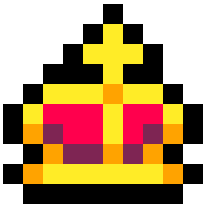 =
= 
The king of fantasy consoles remains the first one on the scene: PICO-8.
The major reasons for this are:
1. The user-friendly all-in-one package
If all you had on your computer was PICO-8, you'd be all set to make and play games comfortably for hours and hours. It's not perfect, but there are some exciting improvements that are being made to the code editor. Be aware that the font takes getting used to, the width of the screen makes long lines of code difficult to write/read, and the sound and music editors require a bit of learning, or tutorials to follow. However, there are PLENTY of tutorials thanks to the large and dedicated PICO-8 community, which we will discuss more below.
2. The visual cohesiveness
Many other fantasy consoles decided to provide wider options to the color palettes that they offer. PICO-8 has stuck with its original 16 colors and remains loyal to them. While that means less freedom to game developers and pixel artists working in PICO-8, what it adds is often overlooked by the other fantasy consoles. Since the PICO-8's color palette remains fixed and limited, any pixel art and games made with the PICO-8 palette is very quickly recognized. That branding is what creates loyal fans and a cohesive community. Which brings us to the next major point:
3. The community
PICO-8 seems to have gathered the largest community of all fantasy consoles by far. Coders, artists, and musicians are constantly active on Twitter, Discord, and the PICO-8 Forum ("BBS") sharing everything from tutorials, tricks, tips, demos, tweetcarts, hardware projects, works in progress, and fully polished games. This community is often praised for being welcoming, friendly, and helpful to newcomers and game developers of any level, which is tough to come by in the world of programming.
4. The limitations
PICO-8 has the strictest and most inflexible limitations of the fantasy consoles compared here. But amazingly, this is actually one of the greatest secrets of its success and charm. The inflexible limitations (screen resolution, file size, color palette) all work to foster creativity and simplify the workflow of making games. Modern tools such as Unity have a seemingly endless number of options and features to choose from and this causes you to spend a vast amount of time learning which tools to use and how to use them, deciding your resolutions and your target platform(s), and finding and learning compatible 3rd party tools for a variety of tasks, all before you start actually making your game.
That is really the benefit of all of the fantasy consoles, but PICO-8 does it best by stripping down those excess options and streamlines you straight into making your game with ease.
5. The HUGE games library
PICO-8 was developed with sharing games in mind from the very beginning. So it has always had a very easy way to export games in multiple formats. One of the major components to the growth of PICO-8's community is the BBS, a forum styled after the retro "Bulletin Board Systems" of the early internet.
On the BBS, the community can share questions, suggestions, feedback, and even cooperate. But the best part is the ability to easily post and play PICO-8 games directly in the BBS. The games don't only exist in the forum, but are then also accessible within PICO-8 itself; sharing not only the game but all of the game's code, graphics, sfx, and music!
Who do we recommend the others for?
TIC-80 we recommend to users who cannot afford PICO-8, but who want similar but higher limitations, or want to use a fantasy console on their Android phones and tablets.
Pixel Vision 8 we recommend to users who want much less limitations and more versatility. The Pro Tools are a worthwhile purchase and give you more easy to use menus and tools such as very easy customization of the fantasy console to fit the colors, resolution, and limits of well known actual consoles. So if you want to create a retro Nintendo or Sega looking game, then this is great for you. They also have some exciting improvements lined up for future releases so pay close attention to them.
As the saying goes, "You can't beat free", but what are you missing out on? Or perhaps possibly gaining by opting for a paid Fantasy Console? In theory, the benefits of paying and supporting the developer means that they can focus on developing full time and release many more features, platform builds, events, etc.
TIC-80 is free and open source, with a pro version available for $5. It even has an impressive amount of features and platforms to go with it. It expands on many of PICO-8's limits but copies most of the layout and design choices that PICO-8 made. So it is a common choice for people who want PICO-8 but don't want to pay for it. It is also popular among people who already bought PICO-8 and want something similar with less constraints.
PICO-8 on the other hand has had a fixed price of $15 since its release and despite that price, it has gained the largest community. It also has a very generous Education licensing package for schools, workshops, libraries and coding clubs. See license section for more details.
Pixel Vision 8 has a flexible pay structure that may be changing. As of this writing, a free version is available but lacks some very desirable extra features. Those are included in the "Pro Tools" bundle and can be purchased for $15 (sometimes discounted), and in our opinion, definitely worth it because they add a great deal of ease and fun to the system. (More on that in the Editors section) Pixel Vision 8 also even offers a subscription based payment for the Pro Tools at $1 per month.
(( Pixel Vision 8 Pro Tools are available now for free, possibly for a limited time. They come pre-installed in the download. ))
Software Licensing is not our forte, but we'll try our best to explain them simply here. This is meant as a helpful guide, not an official statement. Contact the fantasy console developers if you have licensing questions.
Most fantasy consoles are under some sort of Open Source license, which is fantastic! Because that means the "source code" (the code used to build it) is openly accessible to anyone and welcomes collaboration to build upon it.
There are different types of Open Source Licenses that have different conditions and limitations. For example, Pixel Vision 8 falls under the Microsoft Public License (MS-PL), while TIC 80 falls under the MIT License.
TIC-80's license has no limits or restrictions. You are free to use, copy, modify, merge, publish, distribute, sublicense, and even sell it. However, this same copyright and permission notice must remain with every copy of TIC-80. Basically, you can't steal it by modifying the source code and claim it fully as your own under a different license. Lastly, there are no warranties or guarantees. So if this software somehow breaks your computer, there's no one to complain to.
Pixel Vision 8's license has a few simple conditions. First, the source code remains under this license, again so no one can else claim it as their own under a different license. Second, you do not gain the rights to use the name, logo, or trademarks of this software. Third, if you do distribute it, modified or not, then you must attribute the creator, Jesse Freeman (@jessiefreeman ) and honor any trademarks such as the name and logo. Lastly, no warranties or guarantees.
PICO-8 is the only one here that does not have an Open Source license. It is "proprietary" or "closed source" which means the author has copyrighted the source code and owns the intellectual property rights to it. Basically, it's theirs, don't mess with it.
However, PICO-8 does encourage teachers and students to use it in their schools and clubs at a generous discount. For educators, a single purchase of PICO-8 comes with a site-wide license, so you can install it on multiple devices for multiple students on-site. Then there is also an 80% discount for educators to buy additional take-home licenses for students off-site.
 =
= 
We've given the star and crown for this category to Pixel Vision 8 because of the ability to set your own screen size. This is especially useful for setting the same limits as retro consoles such as Nintendo Entertainment System, Gameboy, or Sega Master System, as well as other preset options in the Pro Tools.
We wanted to recognize that major difference and unique feature of Pixel Vision 8 which seems like it was the author's original intent when building a much more versatile fantasy console than PICO-8. And he certainly did that without simply copying PICO-8. While many PICO-8 fans dismissingly call TIC-80 and other fantasy consoles "clones of PICO-8", you just can't say that about Pixel Vision 8. It is a refreshingly unique fantasy console.
Having said that, we must also point out that the fixed screen resolutions of PICO-8 and TIC-80 do have serious benefits. Under the section named "Which do we recommend overall?", we explain how the strict limitations are actually one of the major reasons PICO-8 works so successfully.
 =
= 
PICO-8 easily takes the crown in this category, mostly due to the PICO-8 forum which doubles as an archive of shared games. The best part is that the games are accessible through both the forum's website and through PICO-8 itself by accessing the "splore" tool, short for "explore".
TIC-80 now has their own internal game-browsing tool called "surf", which also accesses the TIC-80 website collection of games.
Pixel Vision 8 is planning their own game browser but sounds interestingly unique.
 itch.io Comparison
itch.io Comparison2,157 results
217 results
5 results
(results last updated 7 April 2020)
PICO-8's Browser
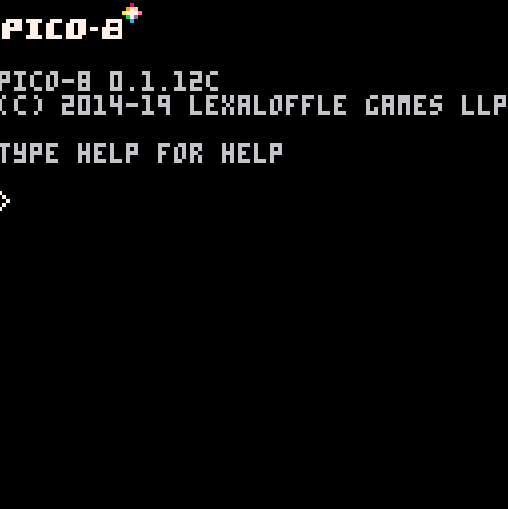
TIC-80's Browser
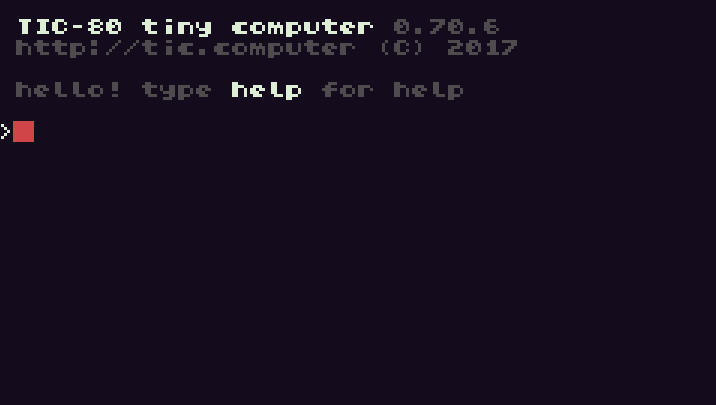
 =
= 
Again, the crown most definitely goes to PICO-8. Not only is the size of the community a major contributor but also the quality of the community, being both very active, and very supportive. That element is extremely important to beginners whose perseverance to learn programming and game development largely depends on the positive feedback and support for the inevitable struggles they are going to face. So it is really important to have that positive supportive community.
Community Engagement


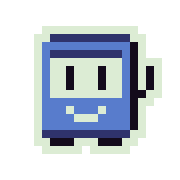
Forum None
None
Twitter Discord (High to Low engagement rated relative to each other)
* TIC-80 discord links to a general "Fantasy Console" server, which has decent activity, but we judged the #TIC-80 channel within.
 =
= 
PICO-8 has the simplest installation process, mainly because it is very easy to find the download page after purchase, and all of the different platforms are clearly labeled. It is very hard to get lost with installing it on to your computer. For more difficult installations such as the Raspberry Pi, there are easy to find forum posts that walk you through the process very well.
Pixel Vision 8 is a straight forward installation experience now. The Pixel Vision OS and the Pro Tools are now pre-installed and come bundled together in a single download. After you log in, the install files are easy to find on their website with options for Windows, Mac, and Linux. On that same page you can also find the downloadable full User Guide, the Quick Start Guide, and the how to use the Pro Tools Guide. Everything you need to get it downloaded, installed, and running.
TIC-80 also has very simple installation processes, but where it loses points is that they are not easy to find. Some are under the "Create" tab in the website which also holds the browser version and the install links looks like an after-thought. Another location of downloading the software is on Github, but beginners may have never used it before and easily get lost. But once you find them, they are straight forward installs.
 =
= 

PICO-8 and Pixel Vision 8 both earned the crown in this category but for two very different reasons.
PICO-8 has a large amount of intro and getting started tutorials on Youtube, PDF fanzines, and their forum. This is mainly because of the large and generous community who want to share PICO-8 with others and support new users when they do join. PICO-8 has a minimalistic manual that has nostalgic value but lacks images and icons that modern software users are more familiar with. However, the community pulls together to supply well documented Wiki pages, cheatsheets, guides and zines to make it easier.
Pixel Vision 8 also does a great job of getting a newcomer introduced and started thanks to the very simple and easy to follow User Guide that is available both online and offline. It is easy to find because it comes with your download as a PDF (along with a mini "Quick Start Guide") and navigating the website to find these documents is very easy as well.
TIC-80 is a bit lacking in tutorials and guides. They have a Github Wiki that goes more in depth but is about as helpful as PICO-8's minimalistic manual. The website's "Learn" section really just directs you to the Wiki page. We see many TIC-80 users referring to PICO-8's learning resources but then they have the added complexity to find the differences between the two fantasy consoles and try to learn it through a bit of trial and error. Similar to how PICO-8 is able to rely heavily on the community to produce introductory guides and tutorials, TIC-80 is also gathering those resources from their community.
 =
= 
TIC-80 deserves respect in this category because of the very busy developers who helped build TIC-80 to allow for a wide range of programming languages. Lua seems to still be the default language and it does have a very similar API to PICO-8, though not similar enough to make porting games easy. The language options do offer a wider range of programmers to join TIC-80's community.
It should be mentioned again however, that limitations are actually a very positive thing here.
PICO-8 uses a single language with a simple API. We tend to think of options as attractive looking when we compare products, and so PICO-8 appears weak in this category. However, the truth is that the PICO-8 community is made immensely more cohesive because every discussion surrounds the exact same set of rules, mainly this single language and API.
Pixel Vision 8 falls in between, focusing mainly on Lua but also offering a commonly preferred game developer language of C#. The drawback to that is the community discussions may become severed at a language level, where some only use Lua and others only use C# and a few know both well enough to easily participate in all discussions.
One positive mention we must make about Pixel Vision 8's Lua API is that it is very readable! If we compare it with PICO-8, you'll see what we mean. PICO-8's built in function for drawing a sprite to the screen is
SPR( )and it is made to be short and condensed to save space. But the drawback is readability because without being told what SPR is for, you may not have first thought of it as being short for "sprite", especially beginners. On the other hand, Pixel Vision 8's corresponding function is DrawSprite( ). I don't have to explain anything because you immediately know what it does and that is the benefit of readable code. =
= 
PICO-8 takes the crown in this category mainly because of the ease, simplicity, and user-friendly features in all of its editors. Although the font is difficult at first, it quickly becomes loved by fans and coding within PICO-8 becomes more and more enjoyable. Every editor has a large amount of intuitive or familiar keyboard shortcuts to speed up creation. The buttons and options within the editors are large and easy to learn. The sound and music editors are a bit tricky though because of a vertical orientation and unconventional editing display.
PICO-8 Screenshots
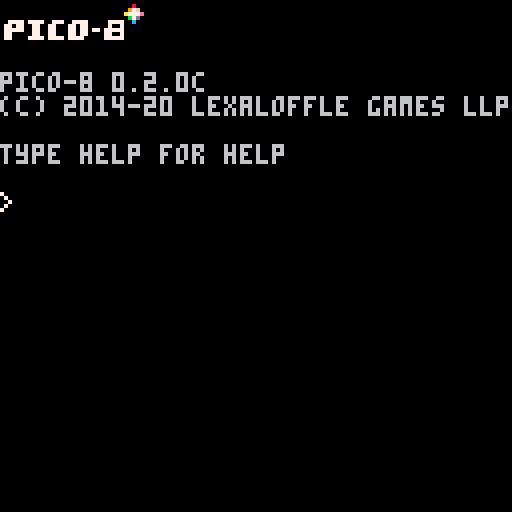
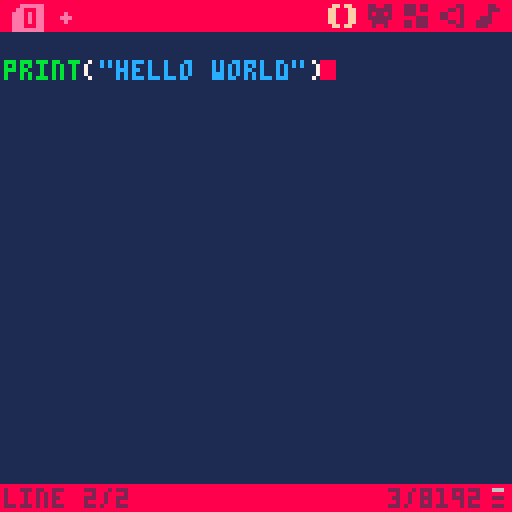
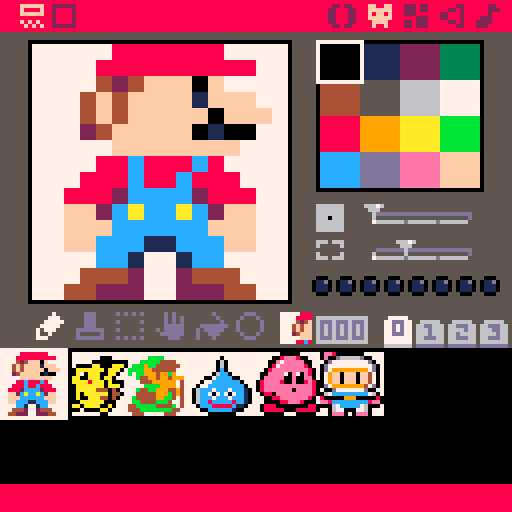
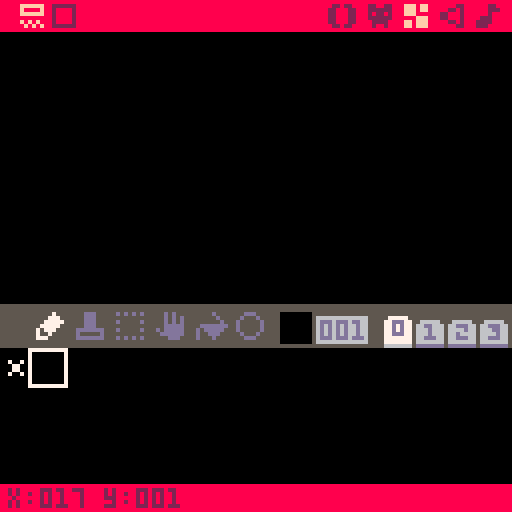
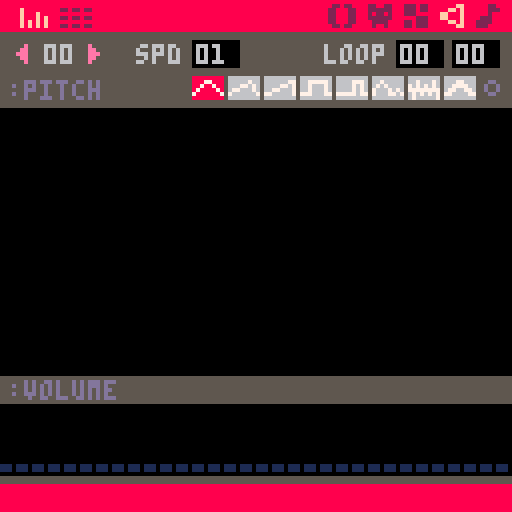
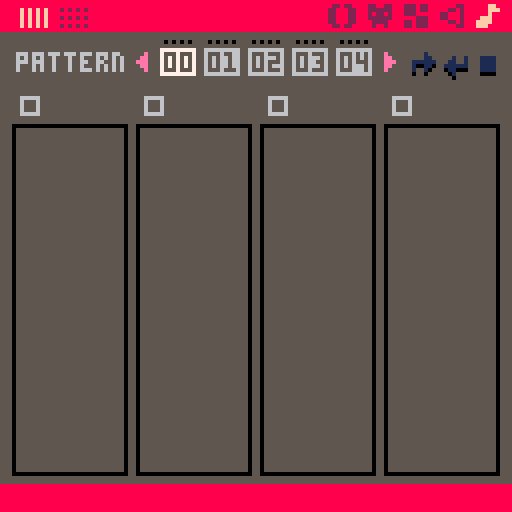
TIC-80 has followed most of PICO-8's layout and design choices with their editors. However, it has fewer helpful features and annoyingly small buttons. The code editor has a slightly easier to read font in a fun retro style too. It does allow for uppercase and lowercase letters. There are some very good looking upgrades being developed for TIC-80's editors that may improve the user-friendliness.
TIC-80 Screenshots
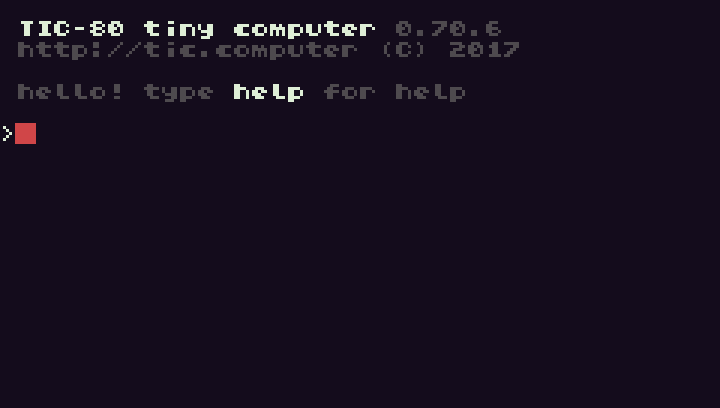
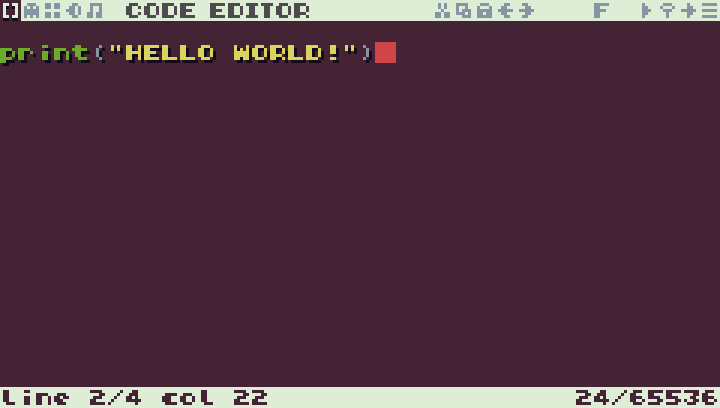
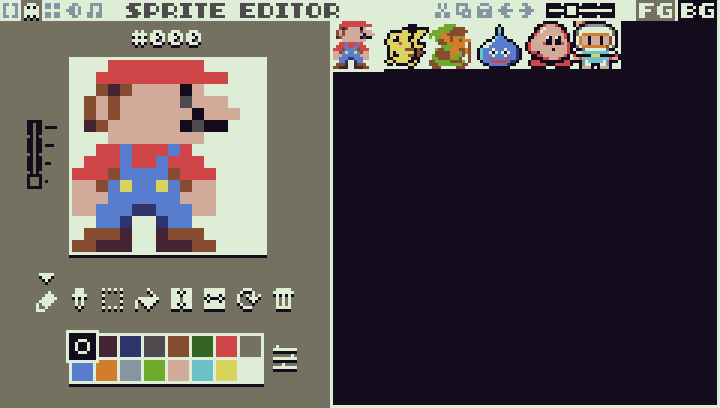
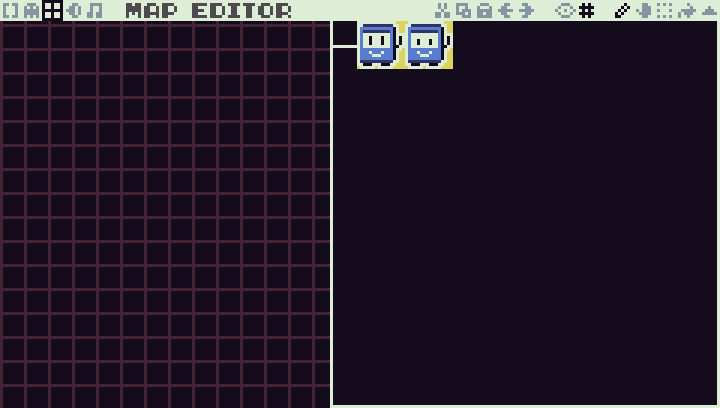
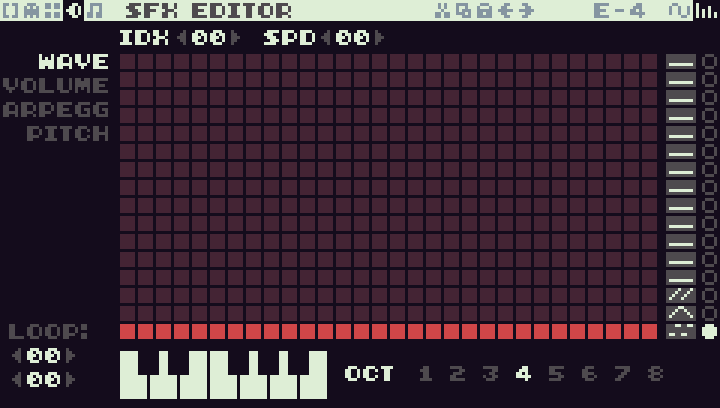
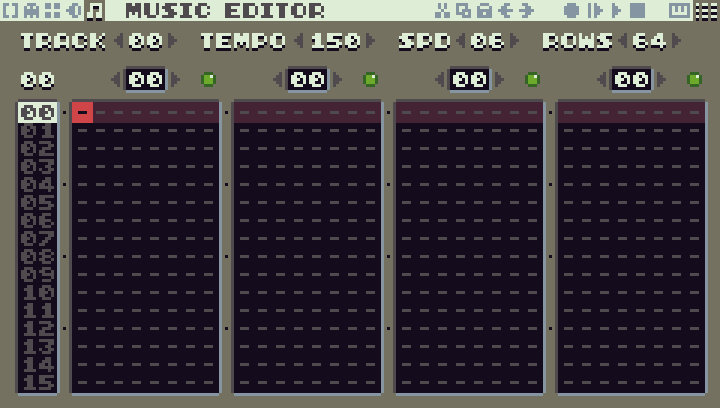
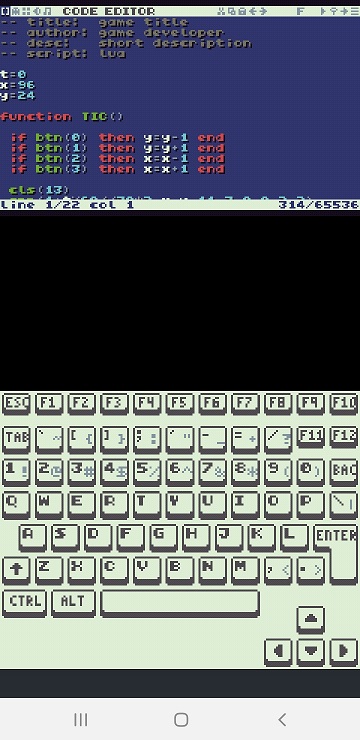
Pixel Vision 8 as always is much more unique. This fantasy console loses many points for having a tough to use code editor and it is suggested to install and set up an external editor instead. It would be very nice indeed if more keyboard shortcuts, code block indicators, scroll wheel functionality, and error detection were implemented so that the code editor can be enjoyable to use and we can remain within the fantasy console. The rest of the editors are fantastic. They are much more intuitive, specifically the music editor's multi-track editing and horizontal orientation. The additional Pro Tools editors allow you to quickly and easily change the color palette and the font. Every editor relies on mouse clicks and drags too much though where the more familiar controls are the mouse wheel and keyboard buttons such as space bar or enter to start and stop music playback. We also mentioned in navigation section that it is much more tedious to switch between the editors as well.
Pixel Vision 8 Screenshots
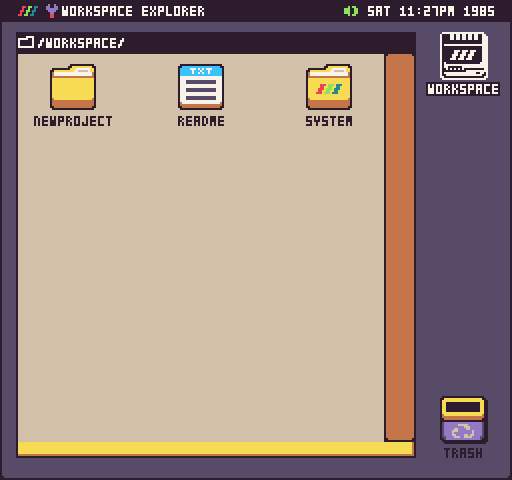
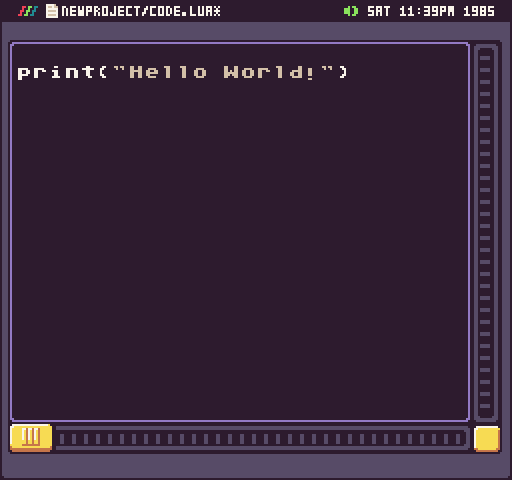
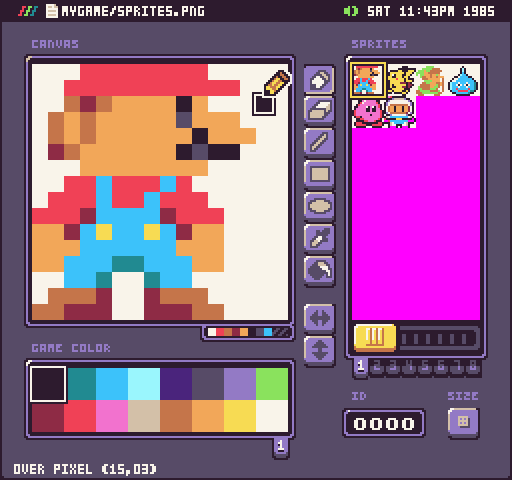
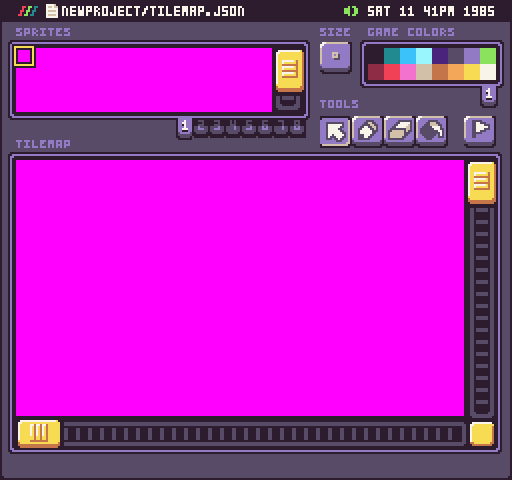
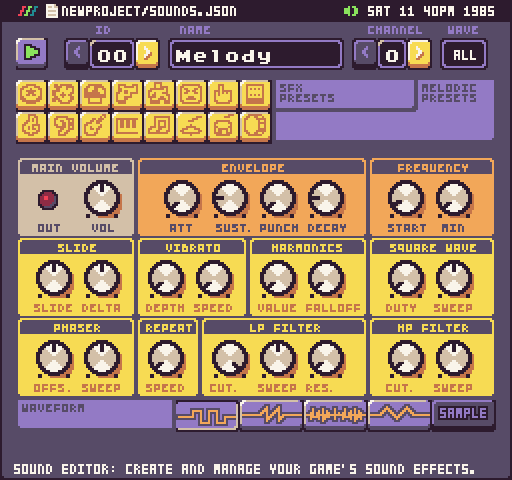
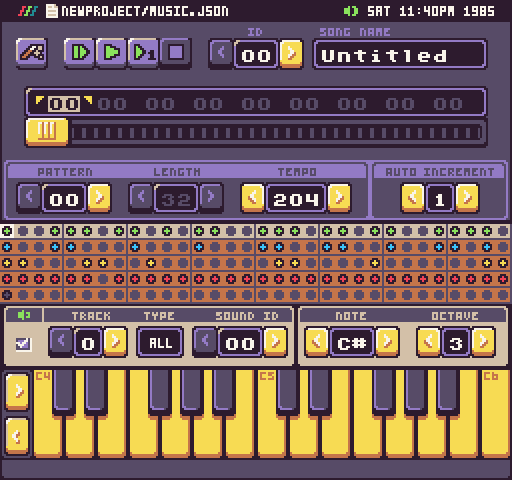
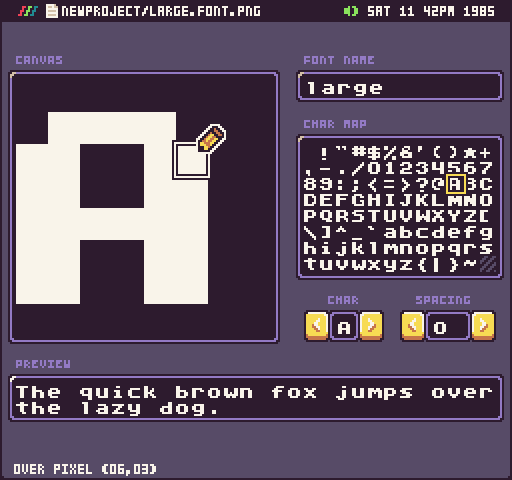
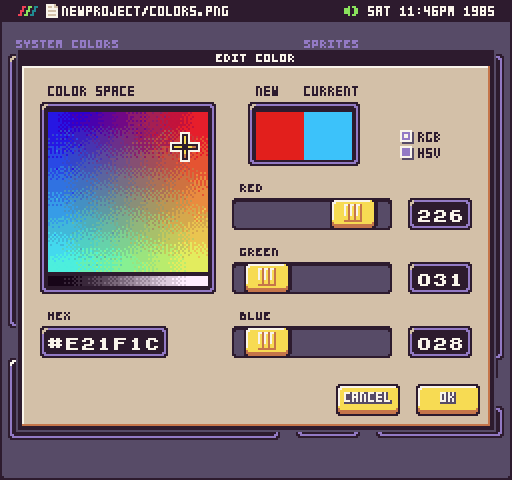
As of right now, PICO-8 is the best overall for its user friendly editors, but they are unlikely to change much. TIC-80 and Pixel Vision 8, on the other hand, have some serious improvements being worked on that has the potential to surpass PICO-8 in this category.
 =
= 
PICO-8 offers the widest variety of export formats and all very easy to perform. The .html and .js files for embedding or sharing on websites is certainly the best. The in-browser PICO-8 for playing games in any device has been consistently improved and updated to work well in any browser or device.
The hidden gem at the core of PICO-8 is the ability to export visual cartridges, complete with a game label, title and creator name in a single .png image file. That image actually also holds all of the game data as well, so others with PICO-8, such as on the forum can very easily save the image and not only play the game, but also have access to the game's code, graphics, sound, and music for easy editing which makes learning much more fun and simple. Sharing games among the community is at the heart of PICO-8 and its simple export abilities have only made that easier.
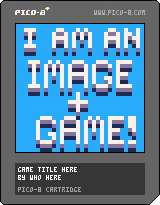
TIC-80 does not offer as many file type exports, and focuses on exporting the entire game so that they can be shared on the TIC-80 website and accessible through its "surf" browsing tool.
Pixel Vision 8 only allows two file types to be exported, .pv8 and .exe, but that is enough to be able to play the games you make on almost as many platforms as PICO-8 and TIC-80. However, the .exe standalone export is only available with the Pro Tools purchase. Since the Pro Tools are the same price as PICO-8, we don't judge them negatively for that decision. We just want to point it out as another major incentive to buying Pixel Vision 8's full features rather than opting for the basic free version.
 =
= 

Once again, we gave the crown of this category to both PICO-8 and Pixel Vision 8 because they are both gorgeous eye candy but for different reasons. PICO-8 for its color palette; Pixel Vision 8 for its design.
Side-by-side Sprite comparison
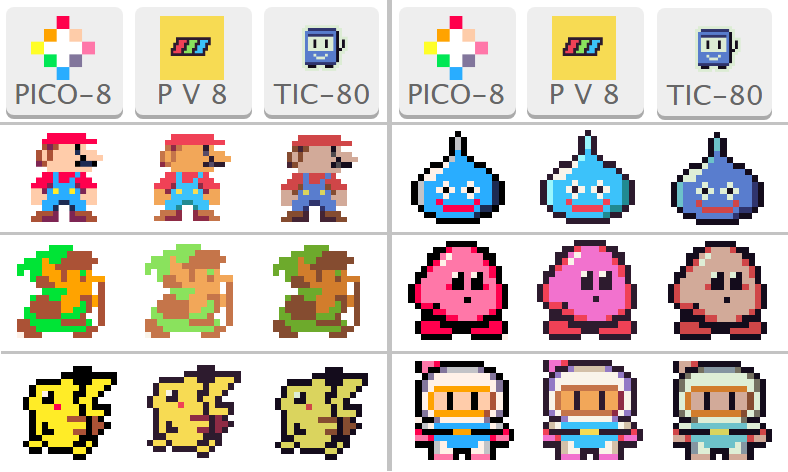
(Although you can change the color palettes of TIC-80 and Pixel Vision 8 for drawing sprites, the default colors are a fantasy console's theme palette)
Before we gush over those two, let's focus on TIC-80 first. It lost a lot of points in this category because of their default color palette being really quite dull. The editors all use the palette and are frankly quite ugly and sadly make us lose the excitement and energy of creating games in it. However, I think the designer has heard that feedback before and an upcoming release will greatly improve those dull colors and might just bring a spark of joy into this fantasy console.

PICO-8 has had a beautiful default color palette from the beginning and the developer has spoken about how much thought was put into it. That attention and care has definitely paid off in multiple ways. First, the PICO-8 editors all use only the 16 colors of its palette and so have a beautifully simple and cohesive design. Second, all of the games made with PICO-8 have a rich, bright, and fun look to them. Again, this creates a cohesive games library where even with the wild variety of games, they are all visually woven together through the same brilliant colors. Third, and perhaps most surprising is that pixel artists seem to have gravitated to the PICO-8 palette and began using it in their showcase art, even when not making PICO-8 games. Twitter is buzzing with #pixelart "in the #pico8 palette". The color palette is simply that nice.
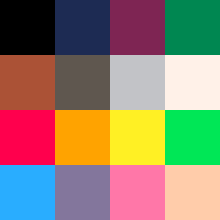
Pixel Vision 8 also has a bright and exciting default color palette that it uses throughout all of its OS and editors. The pixel art buttons and icons made by Christina Antoinette Neofotistou (@castpixel) are absolutely gorgeous and definitely contribute to the feeling of wanting your entire computer to have the Pixel Vision 8 OS look. It would be great to see a collection of games made with this fantasy console to be as united through the default colors as PICO-8 is, but the ability to swap colors, especially to mimic retro consoles such as the Gameboy, is just too tempting not to try. So beautiful, but so many options, so try not to get stuck in those decisions for too long before actually making your game!
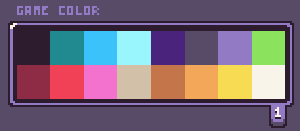
The aesthetics of Pixel Vision 8 goes beyond the default color palette and earns the shared crown for the layout, buttons, and icons:
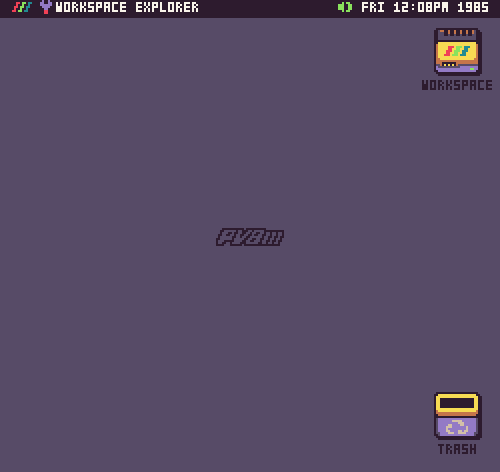
 =
= 
Pixel Vision 8 takes the crown because of the wide variety of limitations that can be modified to fit your needs. It is advertised as a "make your own fantasy console" and the ability to emulate an actual console's limitations are an attractive feature. This is one of those categories where more options looks great at face value, but more options means more decisions and that may not be the best for you.
TIC-80 sits in the middle between the other two with a higher set of limitations that allows for larger games and processing/rendering power. If PICO-8's limitations feel too restricting, but you don't want to customize the limitations like Pixel Vision 8, then TIC-80 is just right.
PICO-8 has the most strict limitations that some may become frustrated by, while many others seem to thrive in. In the overall section at the top, we have already discussed why these limitations are actually one of PICO-8's major strengths. It fosters creativity, boils decisions down to the essentials, and streamlines the creative process so you can get straight to the fun of making games quickly and easily.
 =
= 

NOTE: Our opinions in this category are less substantial because we have only observed Pixel Vision 8 and TIC-80 for a short time. We hope to adjust this category and others further as we continue to observe these fantasy consoles and their developers and communities.
The crown goes to both PICO-8 and Pixel Vision 8 for now because both developers are actively supportive of their fantasy consoles in the community.
PICO-8's developer is mainly active on Twitter and their forum (BBS) and updates fairly regularly with news, or contributions of games, demos, or snippets of helpful resources. He also frequently gauges the community's feedback for decisions he is making for improvements on the fantasy console.
Pixel Vision 8's developer is very active on Discord and so he is readily available for help, guidance, and support. He often updates about the progress and upcoming features being made to each update of the fantasy console. He also collaborates with artists, musicians, and programmers often since it is open source software and so there is good opportunity for the community to get more involved in aiding the development of Pixel Vision 8.
TIC-80 is also open source, and has had many contributions from its community to develop it and make the improvements that they wanted. The developer is still young and busy with other important tasks, so he is understandably less available. That is also part of the price we pay for getting free software. However, the developer is not absent and although not as easily contactable, does appear now and then on discord to answer a question or provide updates on what improvements he is currently working on.



 Voxatron
Voxatron

